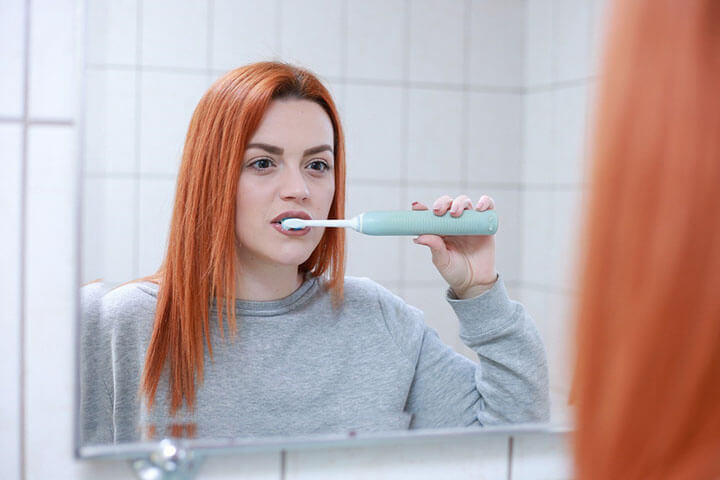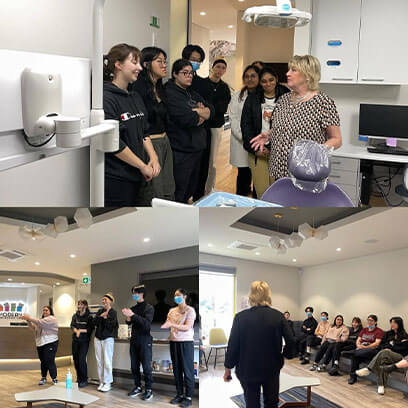Braces enable patients to enjoy beautiful, straight teeth. Straight teeth not only look great, they are also easier to clean, meaning that they are less susceptible to problems such as toothaches and decay later on in life.
The prospect of braces is quite exciting, but it is also totally understandable to have concerns or questions as you get ready for your orthodontic appointment.
To quell your concerns, we have written some answers to the questions you probably have floating around your head right now. You’re welcome!
1. What do braces cost?
The price of braces will vary greatly depending on how misaligned your teeth are. Generally speaking, the more severe your misalignment is, the more you will have to pay for braces.
The most affordable type of braces is metal braces. Overall, you can expect to pay $4,500 to $7,500 for your treatment. Ceramic braces are a bit more expensive, with the cost beginning at about $5,000 for single arch treatment.
Clear Aligner Therapy (C.A.T) such as Invisalign® is an alternative option to braces. They are comprised of a series of plastic clear trays that align with your teeth. The price of Invisalign® is similar to ceramic braces.
If you choose lingual braces, those are braces that are positioned on the inner side of the teeth, you can expect to pay $9,000 to $13,000.
Although the cost of braces might seem expensive, there are several ways that braces can be made more affordable.
Contact your dental insurance company to find out what coverage they are offering for orthodontic treatments.
If you have to pay for the complete cost of prices of braces yourself, then look for an “orthodontist near me” that has interest-free financing options available. It is much easier to pay for your braces in smaller installments each month instead of having to pay one large upfront lump sum.
2. Are braces painful?
Yes, is the short answer. However, before you start to panic, note that it is usually very mild discomfort, and you can manage it just as easily as a mild headache or scraped knee.
Usually, the worst pain is felt on those days right after you first get your braces, and after the wires are tightened. The pain might feel like an aching or pain in your jaw.
Frozen veggies or ice can be held against the outside part of your jaw or you can take an over-the-counter pain reliever, such as ibuprofen to make yourself more comfortable.
Sometimes you may experience an acute stinging if the brackets and wires scrape your tongue or cheeks. This pain can be minimized by keeping brace wax close by so a dab of wax can be placed on your braces if they start rubbing.
The beauty experts at Ink Cosmetica have seen the impact teeth have on confidence. They explain, “while braces can be expensive, we’ve seen first-hand the impact a stunning smile has on a young person’s confidence. In the long-run this can be a priceless benefit and something no amount of money could have bought.”
3. When wearing braces, which foods need to be avoided?
When you first get your braces, they will feel strange in your mouth, and you may have a hard time eating a selection of foods since your jaw will be uncomfortable and tender.
There are just a few foods you need to avoid when you wear ceramic or traditional metal braces:
- Really crunchy foods such as hard lollies, potato chips and nuts
- Overly chewy foods such as gummy lollies and beef jerky
- Sticky foods such as caramels, licorice, gum, and toffee
- Foods you chew considerably such as corn on the cob and apples
If you choose Aligners instead of regular braces, dietary restrictions are not something you need to worry about.
Since you take your trays out before you eat, you can eat whatever you like and replace the trays after you have finished your meal. Whilst you are wearing your aligner trays, you do need to be careful about what you drink.
It is fine to drink water when you are wearing aligners, but if you are going to drink dark-colored beverages such as tea or coffee or any sugary liquids then you need to take the aligners out since they can become stained.
4. How long do you need to wear braces?
When you go to see your orthodontist to have your braces fitted, often they will estimate the amount of time you are going to need to wear braces. Generally, you will need to wear braces longer the more seriously misaligned your teeth happen to be.
Keep in mind, this is an estimated time frame. As your orthodontist continues to observe how your teeth are moving in your mouth whilst they react to the braces, then they may have to adjust the treatment time frame accordingly.
Most teenagers and children must wear traditional braces for around 18 month, although some milder misalignments might be able to be corrected in one year, while the more severe cases can take up to three years or beyond.
5. When wearing braces, how can you take good care of your teeth?

When you have braces, it will take a little longer to brush your teeth. However, it is very important to do a thorough job. A toothbrush that has a small head should be used, and spend time brushing around each individual brace.
Be sure to floss after every meal since that will remove the food particles that can become caught in your braces and teeth. After brushing and flossing, use an antiseptic mouthwash to kill any lingering germs.
Most people who wear braces develop the habit of taking their toothpaste, toothbrush, and floss around with them. That allows them to brush after meals and snacks that they eat whilst they are out of town or at work.
Cake-maker Pearl from Pearl’s Creations says that the food you eat must be taken into consideration. She says, “under normal conditions, sugar and teeth do not make for great bed-fellows. But when you have braces, sugar can be even more destructive. Sugar can easily get caught in braces, which means it can do damage out of sight for months or even years! It pays to be careful with your food choices”
Keeping your teeth clean whilst using Invisalign is easier. Take your aligners out before you brush. Brush and floss as you usually would. Utilise the cleaning kit that your dentist gave to you to clean your aligners, and then put your aligners back in.
Have any questions? Come talk to the team from Modern Orthodontics!
Written by: Nicholas May
Nicholas May is an aspiring writer and content creator. He is driven to create content that increases website traffic, clicks and conversions. And hopes to one day launch his own business with the skills he has learned.

















